
‘Awataran’ is a Nepali terminology that refers to the landing of certain object, problems and issues. The title of this book, ‘Awataran’, refers to the landing of all sorts of political issues especial, a decade long armed revolution of Maoist and the world baffling unification between CPN, UML and CPN, Maoist. With the Safe Landing Nepal has entered into the new era of peace, progress, and prosperity.
If we go back to the history of modern Nepal, we know that Jung Bahadur Kunwar, Rana, had seized the power through violent Massacre known as Kot Parva1
Then after, the use of violence is seen to have been used formally to seize power in Nepal. The Rana regime that began with the family massacre relying on violence in Nepal had been abolished with the use of armed rebellion, diplomatic and geopolitical conspiracy and tactics in 1950.
Before the institutionalization of the achievements of 1950, King Mahendra had reinstated unitary Shah-regime and pushed Nepal to regression resorting armed force in 1960. A series of armed and armless struggles of different nature and size have been practiced in Nepal for the restoration of democratic system to remove 30 year long autocratic Panchayat system. Democratic republic has been restored in Nepal with the establishment, development, and expansion of political parties and their organized and systematic leadership to abolish autocratic regime. The armed revolution launched by Nepali Congress against King Mahendra’s regression had landed finally in King’s jail being uncared in Nepal, insulted and chased on behalf of India.

Nepal Communist Party (ML) conceived with Jhapa rebellion and begun with Revolutionary Romance against Panchayat autocracy had been successful to be a major political power by 1990 through peaceful constitutional course (Oli: 2018). Jhapa revolution, in Oli’s words, was the organized rebellion initiated by a large section of suppressed and exploited people at a time when all kinds of lawful ways were blocked. The ideological leadership of Madan Bhandari had established Communist power, accused for being unitary dictatorship, as a pioneering power of multi-party competition. The program of People’s multi-party democracy, on the originality of Madan Bhandari’s ideology, made communist power stand in the offensive position in Nepal and the original incident is still fresh.

The other original incident of Nepal is the landing of Maoists armed revolution that had begun with the slogan of ‘Power comes through the barrel of gun’ into peaceful process after a decade. It had been like a tragedy that Nepalese politics that had entered into peaceful process kept on entangling around a vicious circle of transitional phase on the same issue for around another decade.
After the failure of the first constituent assembly and the formation of the second constituent assembly that promulgated a new constitution provided Nepal a new identity. The new constitution promulgated on 20 September, 2015 introduced Nepal as a ‘Federal Democratic Republic’. Along with this incident, the system that all people preferred has been constitutionally institutionalized.
After the elections held in 2017 as well as the miraculous unification between Maoist that had been romantic in the bloody history of revolution and UML the leader of lawful movement not only the rebellions initiated for the change but also the Nepalese politics has been easily landed. The situation of the unexpected political stability with almost two third majorities has ensured the way towards socialism oriented system systematized in accordance to the agreement in the constitution.

It was certain that without the unification of two communist parties the political stability based on the electoral system adopted by Nepal would be no more than a fantasy. It is also a new and original incident across the world on the ground of Nepal’s constitutional and parliamentary-practices. Prime Minister KP Sharma Oli is of the view that the situation should be considered as a completely political landing. Chairman of Nepal communist party, NCP, and supreme commander of the then Maoist people’s war, Pushpa Kamal Dahal Prachanda has termed the political situation aftermath the unification of two communist parties as leap of political transformation.
Nepal has finally come to the juncture of political landing amidst the dissolution, landing, and transformation of all armed revolutions hitherto initiated so far from 1950 to 2017.
This book has incorporated all the betrayals and counter-betrayals, treachery and conspiracies among those political forces that were advancing to win the state power in the annals of history. Readers, who go through this book, will have an opportunity to know facts about how and to what extent the foreign elements could use and misuse Nepal’s geopolitical sensitivity. Prachanda, in this context, opines:
The party that had been ready to sacrifice for a great change in Nepal did not have to compromise and afraid of any power. Obviously, it has seriously internalized and taken into consideration the need to join hands with other political forces and attack them in need at a certain juncture of time for its benefit. You may also term it ‘Political Tactics’. Is there any political party that has established itself in Nepalese politics without adopting this policy (Kandel: 2011).
Nepal Communist Party was established with the sole objective to establish republic through abolishing monarchy for which the Communist movement of Nepal has adopted all possible measures. There was a fix objective of establishing new people’s democracy completely dismantling the old feudal monarchy through armed revolution during the phase of party establishment. It clarifies that there was no foreign target, interest, and plan except the establishment of republic in Nepal. However, there are several incidents and examples of direct and indirect activities of the foreign powers for the protection of their interest in Nepal. Establishment of republic is the principal goal of Nepal Communist Party. There are examples of the abolishment of powerful monarchies by communists in twentieth century across the world. Communists abolished the Czar regime in Russia which forged an alliance with America and Britain during the Second World War after the establishment of socialist state power in Russia. Can anyone claim that incident as an immoral one? Sun Yat-sen and his followers defeated monarchy and established republic in China in 1911.

However, after Chiang Kai Shek with an extreme reactionary role as a ghost of monarchy, communist party of China established people’s democratic republic in 1949 through armed revolution and has been exercising socialism wonderfully.
In Nepal’s context it is self- betrayal and betrayal to the nation as well of the external powers that claim themselves to be the greatest democrats to try their level best to protect monarchy up to the last hour and claim that the republic in Nepal is a foreign design. The time has come to wish as did historian Baburam Acharya ‘May it never happen so'(Acharya:1965). Similarly, the intellectual community should be free from ill-culture of disbelieving the ground-reality and their identity. We should realize that every individual has his own intellect (Acharya: 1965).
However, we can’t self-disrespect ourselves, twisting the facts of history and determined goals of political power and claim everything has imposed from outside. The remembrance of the conspiracies and tactics played in the communist movement of Nepal to fulfill the objectives of the nation and parties signals the challenging days ahead. This book will obviously expose the sort of precaution the leadership that has reached to the comfortable political landing, in such a context, has to take. At the same time we should review the polluted tradition of defaming the political movements and leaders by the so called intellectuals who enjoy the fruit of free environment created by the armed and lawful revolutions in Nepal. Twisting the facts of history and necessity in accordance to the personal whim is the so called democratic tendency and the clumsy style of ‘Crony Capitalism’.
The attitude of commenting the deplorable condition of the country, defaming the political stability and blaming for practicing dictatorship is dishonesty and betrayal. Since the political and intellectual community of this country have been tortured more by such tendency, there is a need of intellectual transformation and safe landing along with the change resulted in the ground reality. An effort, to present the reality as it is before the readers and make the facts public rather than the tendency of deforming Nepal’s armed revolution and the evolution of left movement, split, and unification has been made in this book. This book has tried to accumulate issues from the incidents of telling unwanted issues before the general public by political leaders driven by destiny rather than intention to the romantic tactics that have cheated planned destiny. The witness of such incidents has been present as irrefutable facts.
There is no need of listening the stories from domestic and foreign intelligence officers who disseminate information with the ill-intention of arousing hatred among Nepalese people and defaming them. Due to the limitation of the weight of this book, it became quite impossible to include international relations and aspects of their dimensions on Nepalese revolution. However, the external dimensions can be read in different contexts as an inseparable part in almost of the chapters of this book.
The sources and information mentioned in this book are based on personal interview, E-mail, Internet, published and unpublished formal and informal documents and literature. The deep longing to prepare this book has been due to the childhood impression of the writer on socialist movement, involvement in leftist movement during the teen age, and the reality of the inability to be dissociated with the past despite alienation from any political parties organizationally. Moreover, this is also the output of the autocratic torture that the author faced in different mode and time and his interest in leftist movement of Nepal and international political affairs. This book is also the continuation of the publications like ‘Media Politics in Internal Politics (2004) and Dispute and Transformation (2010).
RNA not only abducted and tortured me physically and mentally many times from 9 September, 2003 but also they seized more than a half of my books and documents from my residence. That incident too inspired me in writing this book. Had not Sharada Sharma, who is not only my wife but also co-warrior, colleague, classmate, andco- entrepreneur of the media, inspired and motivated me continually, I could not have completed this book.
During my more than twenty-year long media profession and more than a decade long political activeness, very incredibly, I have been successful to work together and be in touch with the supreme leaders of the leftist movement in Nepal. As a result, I didn’t have to use the secondary sources for the information of certain incidents. Moreover, I got an opportunity to closely observe the contexts of the unification between CPN, UML and CPN, Maoist center. Those context and incidents might be romantic stories after certain period. This is my duty to clarify the fact that the latest incident remained responsible to inspire me from my inner heart to publish this book.
I am highly gratitude towards her Excellency president of Nepal, Bidya Devi Bhandari, Rt. Honorable Prime Minister KP. Sharma Oli, the chairman of NCP and the supreme commander of the ten-year long people’s war, Pushpa Kamal Dahal, Prachanda, former Prime Ministers, Madhav Kumar Nepal, Baburam Bhattarai, a highly reputed (highly intellectual) traveler of Nepalese Communist movement and Mohan Bikram Singh for their generosity to completely present their personal contexts and personal issues of the history as a friend instead of a writer and a journalist. This book contains their relevant sayings; however, I have tried my level best to maintain the decency for their respective port-folio.
Notes:
- The Kot massacre took place on 14 September, 1856 ,when then Kaji Jung Bahadur Kunwar and his brothers killed about 30-40 civil, military officers and palace guards of the Nepalese palace court including the Prime Minister of Nepal and a relative of the King, Chautariya Fatte Jung Shah and other senior-most ministers and army generals at the palace armory (Kot) of Hanuman Dhoka in Kathmandu.in 1856 after Prithivi Narayan Shaha and his successors annexed Baise2
- The 22 principalities were Jumla, Doti, Jajarkot, Bajura, Gajur, Biskot, Malneta, Thalahara, Dailekh, Dullu, Duryal, Tulsipur-Dang, Sallyana, Chilli, Phalawagh, Jehari, Darnar, Atbis Gotam, Majal, Gurnakot, and Rukum.and Chaubise3
- The 24 principalities were Gorkha, Lamjung, Tanahun, Kaski, Nuwakot, Dhor, Satahun, Garahun, Rishing, Ghiring, Paiyun, Parbat, Galkot, Palpa, Gulmi, ArghaKhanchi, Musikot, Isma, Dhurkot, Bajhang, Bhirkot, Pyuthan, and Butwal.principalities.


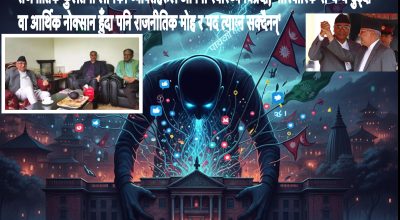
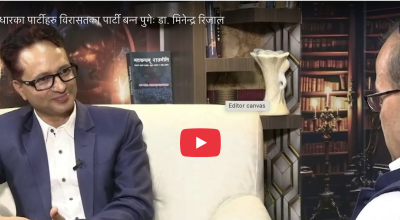
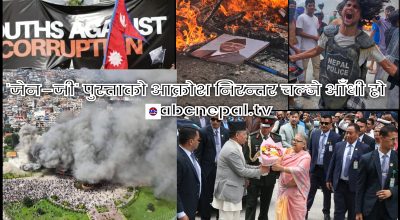
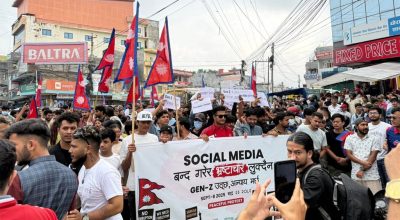
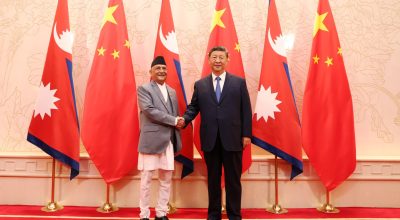
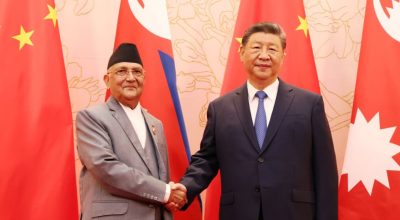
प्रतिक्रिया दिनुहोस्